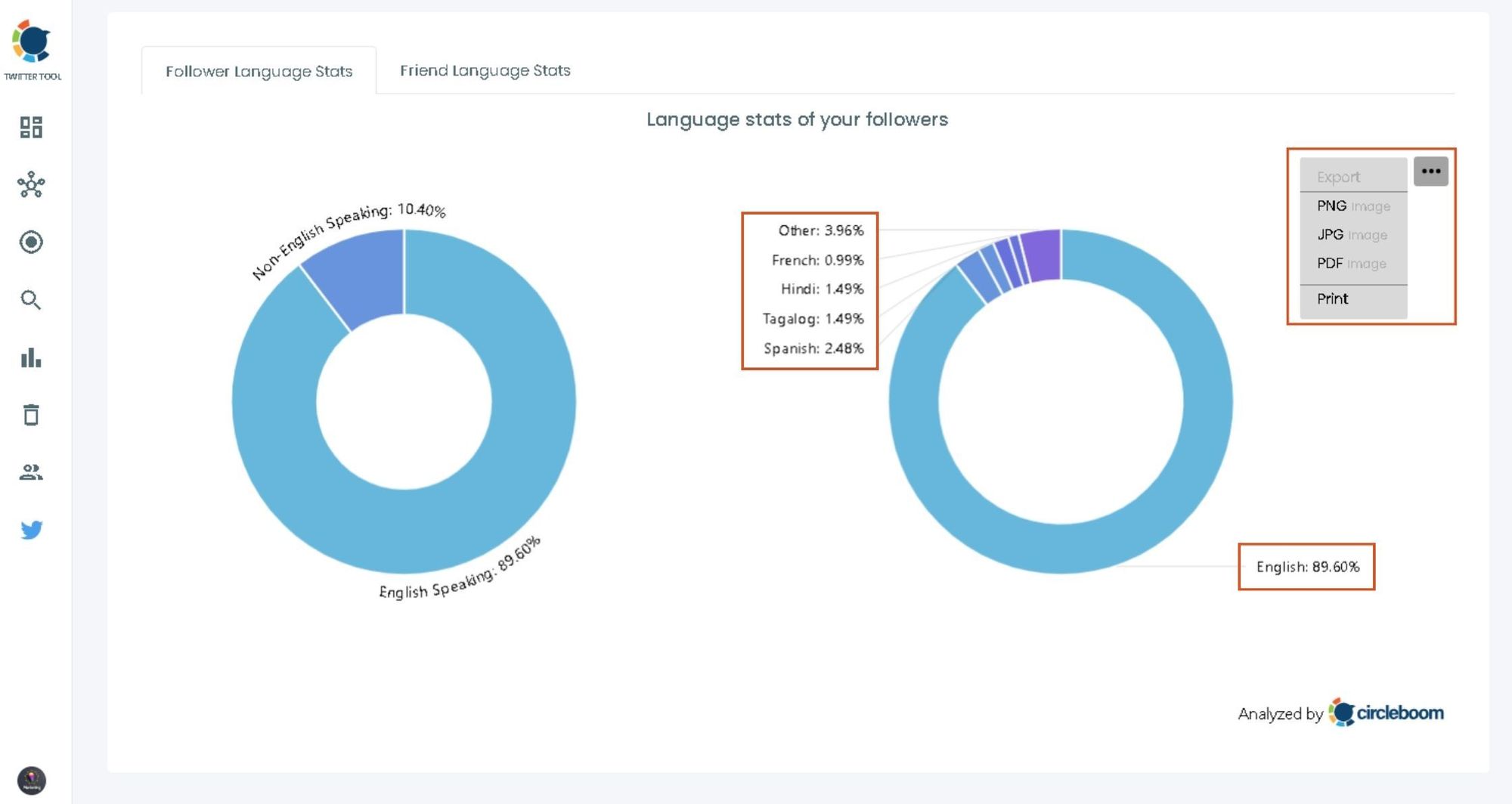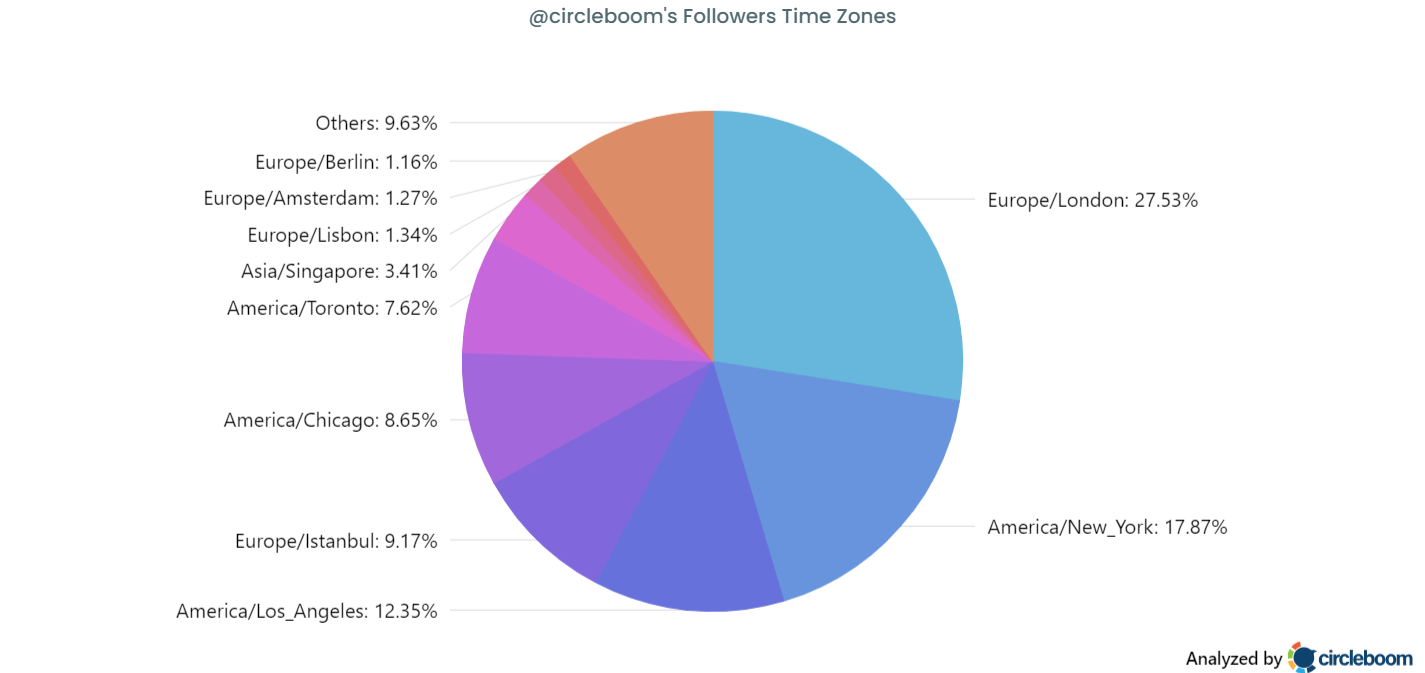Have you ever wondered how much valuable information is hidden within the endless stream of tweets on Twitter? As a researcher, tapping into this wealth of data can unlock powerful insights and drive groundbreaking studies.
In this blog post, I'll share some innovative research ideas that leverage Twitter data, inspired by my own experience using follower analysis for my thesis. Let's explore how you, too, can harness Twitter data for your research projects.
Analyzing follower demographics
Which age group uses Twitter the most?
One of the most straightforward yet insightful uses of Twitter data is analyzing follower demographics. Understanding who your followers are can provide deep insights into your audience. Demographic data such as age, gender, location, and interests can help tailor your content, marketing strategies, or even policy decisions.
For my research, I used Circleboom Twitter to analyze the demographics of my followers. This tool allowed me to break down my follower base by various demographic factors, helping me understand the composition of my audience. Such analysis can be applied to numerous fields, including market research, political campaigns, and public health studies.
Before diving how to analyze your twitter followers, here someresearch topics:
| Research Topic Suggestions for Analyzing Follower Demographics |
|---|
| How do follower demographics influence engagement rates on Twitter? |
| What are the demographic differences between followers of competing brands? |
| How do geographic locations of followers correlate with brand loyalty? |
How to analyze your Twitter followers with Circleboom!
Dive into demographics
Which country has the highest number of Twitter/X users after the US?
How many Japanese followers do you have? Let's check where your followers come from!
With Circleboom, you can view the following demographics of your Twitter followers:
- The gender breakdown of your followers,
- Language stats of your followers, and
- Locations of your followers, and
- The time zones of your followers.



This paints a basic picture: Are you attracting mostly students in your city? Young professionals across the globe? Or are you reaching the correct people for your female attire brand? Should you even keep on tweeting in English or consider creating content in different languages?
Learn what and when to tweet
Two more very important insights on your followers are also available on Circleboom: The interest cloud of your followers and your personalized best times to tweet.
With the interest cloud feature of Circleboom, you'll know what your Twitter audience is talking about. Hence, you become able to post pinpoint your tweets depending on what's resonating within your followers.
And when it comes to the best time to tweet, I'm sure you've seen a lot of articles telling you it's some specific hour of a day on a random week. Something like "5 pm on Wednesday", you know.
But Circleboom revolutionizes this. By analyzing when your followers are active the most, it actually tells you when would be the best time for your tweets to get the highest engagement possible. That's why it's called "your personalized best times to tweet".
You can read more on the timing of your tweets here:

Sentiment analysis of tweets
Sentiment analysis is another powerful application of Twitter data. By analyzing the sentiment expressed in tweets, researchers can gauge public opinion on various topics, products, or brands. This involves categorizing tweets as positive, negative, or neutral and can provide valuable insights into public mood and perceptions.
For instance, sentiment analysis can be used to track the reception of a new product launch, monitor political sentiments during elections, or study public reactions to major events.
| Research Topic Suggestions for Sentiment Analysis of Tweets |
|---|
| What is the public sentiment towards a new government policy as expressed on Twitter? |
| How does sentiment towards a product change after a major marketing campaign? |
| What are the sentiment differences in tweets about climate change across different regions? |

Tracking trends and hashtags
Twitter is a hub for real-time trends and discussions, making it an ideal platform for tracking trends and hashtags. This can be useful for market research, event planning, or understanding the public discourse on various issues.
By tracking trending topics and hashtags, researchers can identify emerging trends, analyze the popularity of certain topics over time, and understand the context of public conversations.
| Research Topic Suggestions for Tracking Trends and Hashtags |
|---|
| How do hashtag campaigns impact brand visibility and engagement? |
| What are the emerging trends in sustainability discussions on Twitter? |
| How do trending topics on Twitter correlate with real-world events? |

Network analysis
Network analysis involves mapping out social connections and interactions to understand the structure and dynamics of social networks. On Twitter, this can mean analyzing who interacts with whom, identifying key influencers, and understanding the flow of information.
Using Twitter data for network analysis can reveal insights into community structures, information dissemination patterns, and influence networks. For example, in my research, I used network analysis to identify key influencers within my follower base and understand their impact on information spread.
| Research Topic Suggestions for Network Analysis |
|---|
| How do information cascades spread through Twitter networks during a crisis? |
| Who are the key influencers in the tech industry on Twitter, and what is their impact? |
| How do Twitter network structures differ between political and apolitical communities? |
Content analysis
Content analysis is the systematic examination of communication content. On Twitter, this involves analyzing the type and quality of content being shared, such as tweets, retweets, and replies.
Researchers can use content analysis to study communication patterns, identify popular content types, and understand the thematic focus of different user groups. This can be particularly useful for media studies, communication research, and brand analysis.
| Research Topic Suggestions for Content Analysis |
|---|
| What are the dominant themes in tweets about mental health? |
| How does user-generated content about a brand influence consumer perceptions? |
| What are the content strategies of successful Twitter influencers? |

Comparative studies
Twitter data can also be used for comparative studies between different groups, regions, or time periods. By comparing tweet activity, sentiment, and other metrics, researchers can identify differences and similarities across various dimensions.
In my research, I conducted comparative studies to understand differences in follower behavior across different demographics. This approach can be applied to numerous research questions, such as comparing brand perceptions in different markets or studying the impact of events on public sentiment.
| Research Topic Suggestions for Comparative Studies |
|---|
| How do Twitter usage patterns differ between urban and rural areas? |
| What are the differences in public sentiment towards healthcare policies in different countries? |
| How has the discourse around environmental issues evolved over the past decade on Twitter? |
Conclusion
Twitter data offers a wealth of opportunities for researchers across various fields. From demographic analysis to predictive modeling, the applications are vast and diverse. In my research, I found Circleboom Twitter to be an invaluable tool for obtaining and analyzing Twitter data, especially for follower analysis.
If you have any research ideas or experiences with using Twitter data, I'd love to hear from you. Share your thoughts in the comments below, and don't forget to follow my blog for more insights and research tips.






